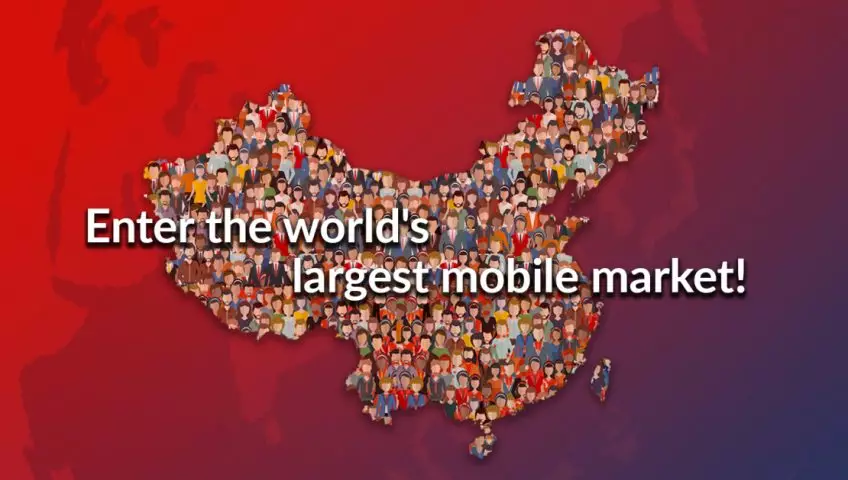
China is becoming an important target for businesses and startup founders around the world.
The challenge to enter the Great China Market is the budget and the cultural difference. The mobile app and web app market is not any different when it involves breaking the invisible “Great Wall” of strong culture and Chinese perception of Western products.
Yiva Digital is a trustable china digital marketing solution agency that will guide you from the start line of your digital product’s journey towards the Chinese market and find out the way to launch an app in China.
How to Compliant to China's Internet Regulation
A number of the world’s highest-ranked brands such as Google, Youtube, Facebook, Wikipedia, Twitter, Instagram, The NY Times, Vimeo, the list goes on, are simply banned from general use.
Foreign companies need to adapt to domestic internet regulations and build a product that's entirely in sync with specific trends that dominate Chinese businesses. Have a glance at how the web is censored in China and what entrepreneurs have to go through the phases before they are able to launch their app.
This being said, when building a mobile or web app, you attempt to do well-documented research about what components, third party elements should be excluded, and check out to integrate their Chinese equivalent. One example of how a corporation has adapted to the authoritative Chinese government is the case of Apple that decided to delete its VPN apps and build a knowledge centre in China with its regulations in mind.
How to Build an App for Chinese Users
There’s no secret recipe for building a subsequent WeChat app that will be as indispensable for anyone living in China. But there are some proven tricks and successful components you'll increase to improve the probabilities of succeeding. Try the maximum amount possible to use QR codes, WeChat functionalities, add rich content and skim some recommendations on the way to optimize your mobile app to extend revenue.
The use of QR codes
It’s no secret that Chinese people have a soft spot for QR codes, their likelihood to use the fast response codes is on the brink of obsession. This is often why many Western brands have incorporated QR codes into their apps once they decided to overcome the Chinese market. Tech specialists wish to claim that if it wasn’t for this Chinese addiction, QR codes would have disappeared from the app market an extended time ago.
Integrate WeChat with your App
Having talked about the Chinese Firewall, the very fact that tech titans haven’t been allowed in China, there have been some gaps to fill within the market. This resulted in the growth of the WeChat app – the almighty dragon, the app for each need a user may need.
In China, WeChat functions as a messaging and calling app, localization app, program app, news feed app, e-wallet app, public services app, mobile top-up, and booking app. to organize yourself, read the article on How WeChat changes the world’s app market – key trends and proven strategies.
Content for Chinese Apps
This is really not rocket science! Just take a fast check out some Chinese apps and websites. The foremost common belongings you will find are rich content, bright colours, and many gamification actions. The minimalist and reduced approach doesn’t work well within the case of Chinese apps. Chinese users generally prefer a more elaborate UI/UX design. confirm to feature many copies, mascots, and characters that will keep your users engaged.
In the case of numerology, the trick is to use “good” volume for everything associated with values, for instance, prices. This might sound trivial to Western consumers but is of the very best importance to Chinese users.
Think about using the in-app payment facilities from WeChat – the super Chinese app. Paying with WeChat may be a hard-to-break habit that you simply should take into consideration if you would like your users to use it.
How to Localize your App for the Chinese Market
Choose a Chinese name for your app
Most brands present on the Chinese market flatter themselves with an authentic “Made in China” tag. Therefore, Chinese users are keener to use a product with a Chinese name instead of an English one. Giving your mobile or web app an English name is like feeding a shark from your hand. the probabilities of surviving are on the brink of zero. However, if you're the lucky owner of an outsized brand, then being foreign is to your advantage. Because of the Chinese love famous and opulent foreign brands!
Make sure your app name has no double meaning
Try to give your app a Chinese name and confirm it doesn’t have a double meaning in their culture. you'll surf the web for samples of how some companies tried to rebrand to the Chinese but failed.
Airbnb may be an example of how brand localization may go the incorrect way. Long story short, Chinese people began to ridicule since the Chinese name for Airbnb was very hard to pronounce and it had been related to a “cheap mattress”, a “woman’s body part”, or a “fake clothes brand”.
Ask local Chinese for help
Finding an honest brand name for your app is often a difficult job. But you'll always ask an area for help to seek out a reputation, which reflects your business identity and goals. In this manner, you'll save yourself from unpleasant misunderstandings.


